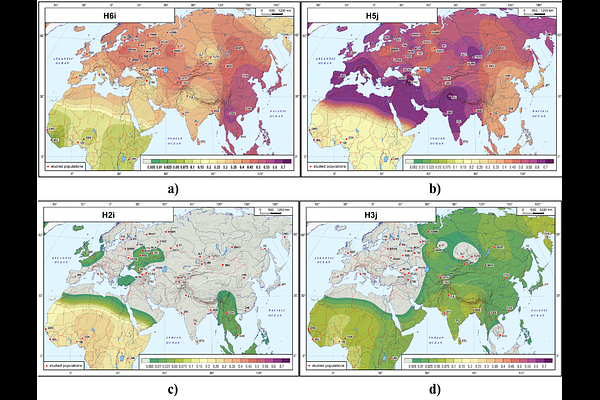Phylogenetic relationships of ATM polymorphic loci haplotypes in Eurasian and African populations

Phylogenetic relationships of ATM polymorphic loci haplotypes in Eurasian and African populations
Olkova, M.; Koshel, S.; Ponomarev, G.; Alimov, A.
AbstractThe ATM gene encodes a key kinase involved in DNA repair and cell cycle control, and mutations in it lead to the development of ataxia-telangiectasia and increase susceptibility to cancer. In this context, the study of the distribution patterns of ATM haplotypes in metapopulations living in Eurasia and Africa using population genetic and genogeographic methods appears to be a socially important scientific endeavor. Polymorphic markers of the ATM gene were studied in 3876 individuals from 46 metapopulations, ATM gene haplotypes and genotypes based on ATM haplotypes were determined, and population frequencies of haplotypes and genotypes were calculated. An analysis of phylogenetic relationships of haplotypes, the Tajima test to assess population changes, and mapping of population frequencies of ATM gene haplotypes and genotypes were performed. The study showed the presence of a linkage block of 28 polymorphic markers of the ATM gene in the Eurasian and African populations. Two dominant ATM haplotypes in Eurasia, which are the result of independent evolution of two branches from the ancestral ATM haplotype, are formed by mutually exclusive alleles and correspond to the \"yin-yang\" concept. The greatest diversity of ATM haplotypes is observed on the African continent. It is suggested that the process of haplotype formation occurred on the African continent, with subsequent migration events to the territory of Eurasia.